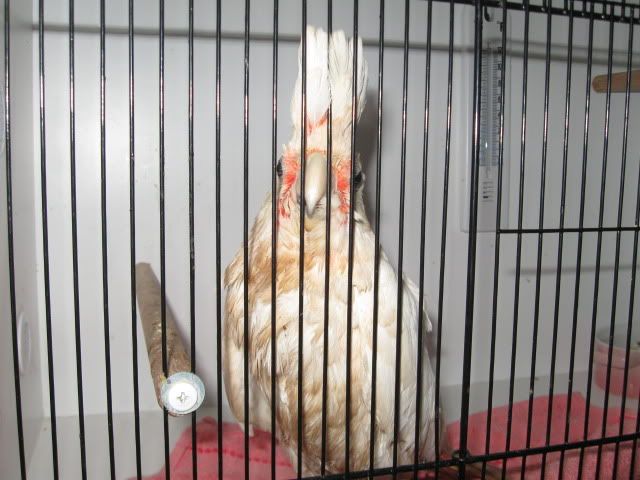Page 6 of 11
Re: Wild Bird Mutations
Posted: 28 Dec 2011, 07:41
by tarred and feathered
Definitely not PBFD as I've seen it before and these birds were exceedingly healthy and active. They looked no different from the normals. I thought about staining but the patterns were too consistent between the two. The only difference was the depth of the colour as one was a touch more chocolate rather than fawn. I was quite shocked to see them and was just lucky that as we'd come away for a weekend I had a long lens with me.
Bowral is in the NSW southern highlands about 1.5-2 hours from Sydney. I live in The inner city and regularly see Little Corellas in Centennial Park and the Royal Botanic Gardens so I guess these guys are not unusual in the area.
Re: Wild Bird Mutations
Posted: 28 Dec 2011, 08:43
by jusdeb
Very unusual find , would be very interesting to catch one and positively tell if it is staining or a mutation .
I thought staining as there are very dark stains around the top of the beak which looks like packed mud ,when mine forages outside she gets muck stuck in the same area .
Re: Wild Bird Mutations
Posted: 28 Dec 2011, 09:25
by desertbirds
Tintola wrote:. Anything the colour of mud seems to command premium prices.

(Look what they have done to the Red-rumped parrot and Scarlet-chested overseas.) If the other Corellas were pure white then I think caramel might be the colour of the month.
So true tintola. What an interesting find though.
Re: Wild Bird Mutations
Posted: 28 Dec 2011, 19:23
by Myzomela
I have seen these birds before and none of them have been mutations. They have all been "environmentally-induced" ie mostly stained by different soils. They do spend a lot of time feeding on the ground so it wouldn't be surprising.
It would be difficult to get a brown pigmented bird from a white bird in any case.
Of course, the only way to say for sure would be to examine some but I wouldn't be betting on it being a colour mutation.
Re: Wild Bird Mutations
Posted: 28 Dec 2011, 20:36
by jusdeb

This is our Corella Bubba after at least 2 baths with baby shampoo . She was washed out of her nest and was sitting in a pool of effluent , the stains didnt go away until after her first moult .
Kinda the reason I think it is staining .
Stained feathers are also a symptom of Coccidia and Beak and Feather ( from my vets mouth ).
Re: Wild Bird Mutations
Posted: 28 Dec 2011, 21:56
by tarred and feathered
I'll have to take your opinions of genetics and veterinary symptoms on these birds under advisement in lieu of an actual answer. (Highly illegal to catch them to test it out I think).
I did speak to an old guy who lives near the golf course and he said he'd seen the birdss for some time as he walks his dog through the golf course each day. However he couldn't really say how long so unless he could say it was over a year that doesn't really prove anything. I'm not sure why the rest of the flock (around 30 or more) were all white so I'm still not satisfied that we have an answer. He did mention they hang around with the galahs rather than the other corellas.
So as an alternative here's a couple of pics of a pair I was watching. This was the closest I could get to any of the corellas.
IMG_0476 - copy.jpg
IMG_0473 - copy.jpg
Re: Wild Bird Mutations
Posted: 25 Jan 2012, 06:40
by iaos
Not sure how long this one had been out for, but he was giving the others a hurry up when they tried to share it's bit of fruit and it flew away strongly when I got too close.
IMAG0715resize.jpg
Re: Wild Bird Mutations
Posted: 25 Jan 2012, 08:03
by Tintola
I think that the two corellas above are just Long-billed Corellas and not a wild bird mutation at all.
Re: Wild Bird Mutations
Posted: 25 Jan 2012, 08:44
by jusdeb
Yep Long Bills me thinks too . They have more colour around the face and neck than Short Bills .
Re: Wild Bird Mutations
Posted: 25 Jan 2012, 10:24
by mattymeischke
Iaos, what an amazing bird.
Where did you see it?
